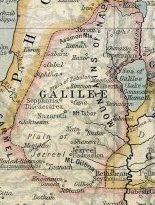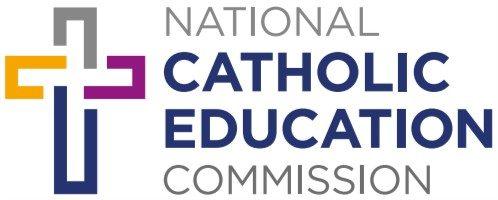10 When he was alone, those who were around him along with the twelve asked him about the parables. 11And he said to them, ‘To you has been given the secret of the kingdom of God, but for those outside, everything comes in parables; 12in order that “they may indeed look, but not perceive, and may indeed listen, but not understand; so that they may not turn again and be forgiven.” ’
13 And he said to them, ‘Do you not understand this parable? Then how will you understand all the parables? 14The sower sows the word. 15These are the ones on the path where the word is sown: when they hear, Satan immediately comes and takes away the word that is sown in them. 16And these are the ones sown on rocky ground: when they hear the word, they immediately receive it with joy. 17But they have no root, and endure only for a while; then, when trouble or persecution arises on account of the word, immediately they fall away. 18And others are those sown among the thorns: these are the ones who hear the word, 19but the cares of the world, and the lure of wealth, and the desire for other things come in and choke the word, and it yields nothing. 20And these are the ones sown on the good soil: they hear the word and accept it and bear fruit, thirty and sixty and a hundredfold.’
New Revised Standard Version Bible: Catholic Edition, copyright © 1989, 1993 the Division of Christian Education of the National Council of the Churches of Christ in the United States of America. Used by permission. All rights reserved.
What to do with this educator’s commentary
This commentary invites you as a teacher to engage with and interpret the passage. Allow the text to speak first. The commentary suggests that you ask yourself various questions that will aid your interpretation. They will help you answer for yourself the question in the last words of the text: ‘what does this mean?’
This educator’s commentary is not a ‘finished package’. It is for your engagement with the text. You then go on to plan how you enable your students to work with the text.
Both you and your students are the agents of interpretation. The ‘Worlds of the Text’ offer a structure, a conversation between the worlds of the author and the setting of the text; the world of the text; and the world of reader. In your personal reflection and in your teaching all three worlds should be integrated as they rely on each other.
In your teaching you are encouraged to ask your students to engage with the text in a dialogical way, to explore and interpret it, to share their own interpretation and to listen to that of others before they engage with the way the text might relate to a topic or unit of work being studied.
Structure of the commentary
See the general introduction to Mark.
Text & textual features
Characters & setting
Ideas / phrases / concepts
Questions for the teacher
The world in front of the text
Questions for the teacher
Meaning for today / challenges
Church interpretations & usage
The World Behind the Text
See general introduction to Mark.
The world of the text
Text & textual features
Much of Mark’s fourth chapter contrasts with the frenetic action that permeates most of the Gospel. However, in chapter 4 there is a distinct pause in the action while Jesus preaches four parables. The first of these is the Parable of the Sower (Mark 4:3-8) and is accompanied by this explanation found in Mark 4-10-20.
The text is structured in two distinct sections. The first section (Mk 4:10-12) identifies the privilege of the twelve and other companions of Jesus, as insiders who receive the ‘secret of the kingdom of God’ in contrast to the outsiders, such as the large crowd, for whom the message is filtered through the riddles of the parables. Understanding of the parables is not a free gift however, it comes with a sense of call and commissioning.
The second section (13-20) presents an allegorical explanation of the ‘Parable of the Sower’ (Mark 4:3-8) The explanation is unusual’ Jesus almost certainly did not include this in his lifetime; indeed parables are intended to be provocative and require thought. For some reason Mark has sought to include this here now.
The allegory contains four elements or categories:
- the seeds sown on hardened paths which are snatched away
- those sown on rocky ground which lacks depth to nourish the new growth
- those that fall among thorns that are ultimately choked and perish, and
- those sown in fertile soil which leads to an abundance of fruit.
Typical of parable, the content is taken from everyday life and would have caused little reaction from its hearers. The idea that seed is lost in these various ways would have been very familiar to those used to farming on the terraced slopes of this generally rugged terrain. However, the notion of a crop bearing fruit ‘thirty, sixty and a hundredfold’ (Mark 4:20) would have been an astonishing, if not miraculous. It provides the clue to this not being a literal account of a farmer’s good fortune: this parable contains a message which needs to be discovered. The parable thus achieves its purpose: to tease the mind in through – what is really being said here?
Characters & Setting
Apart from Jesus himself, there is some ambiguity about the other characters in this text. Jesus has been teaching ‘beside the sea’ where ‘a very large crowd gathered around him’ (Mark 4:1). Jesus is said to have boarded a boat and sat there teaching while the crowd was ‘beside the sea on the land’ (Mark 4:1).Now, we are told that Jesus was alone when ‘those who were around him, along with the twelve, asked him about the parables’ (Mark 4:10). Who those near him were is unclear. The naming of the twelve as another occasion in which they are singled out for particular instruction.
The geographical setting for the text is the region of Galilee in the Northern part of Palestine.

Galilee is the region in which Jesus’ home town of Nazareth is located and is the setting for the early part of Jesus’ ministry before he begins his journey to Jerusalem.
Ideas/phrases/concepts
The text conveys the idea of a deeper understanding of Jesus’ message which is somehow reserved for those who should be closest to him. That the twelve fail often indicates that even they struggled with the message of the parable: were they among the seeds that fell on thorny ground?
Jesus’ dominant message was that the kingdom of God had arrived. What that kingdom would be like is the focus of the parables found in chapter four of Mark’s Gospel.
The explanation of the allegory provides further emphasis on the fragility of the ‘word’ (Mark 4:14) in the absence of a nurturing environment and / or in the midst of persecutions and pressing concerns.
Questions for the teacher:
The world in front of the text
Questions for the teacher:
Please reflect on these questions before reading this section and then use the material below to enrich your responsiveness to the text.
Meaning for today/challenges
The text has been pigeonholed with Jesus as the sower of God’s word. We, listeners are the earth, the path and the thorny ground. Greater insight can be had by changing roles: if I am the sower, what word and I sowing? If I am the seed, where do I land.
Bu extending the allegory the parable opens up to the consideration from multiple levels.
The text certainly provides a reminder to followers of Jesus, as it did to the community of the early Church, that the receiving and nurturing of the word is a challenging aspect in the life of a disciple. The opportunity for nurture of faith as part of the community of believers remains available to Christians today, however, we can recognise that this is not part of life for most people in contemporary western societies such as ours. We also recognise that the ‘cares of the world, and the lure of wealth, and the desire for other things’ (Mark 4:19) are at least as prominent as they would have been for the community of the early Church. Indeed, with the increased focus on consumerism, wealth and personal satisfaction in modern western societies, it could be argued that this concern is even more profound than it was at the time this text was written.
Church interpretation and usage
The most common uses of this text have been to apply the allegorical interpretation to the situation of evangelisation and catechesis. Such interpretations often include an emphasis on the nurturing of faith within the community of the Church through the sacraments, prayer, fellowship and service as well as warnings against temptation and becoming caught up with ‘the cares of the world, and the lure of wealth, and the desire for other things.’ (Mark 4:19).
Liturgical Usage
This text from Mark’s Gospel (Mark 4:10-20) is used in the liturgy of the Wednesday of Week 3 of Ordinary Time, Year 1 as part of a longer Gospel reading encompassing Mark 4:1-20. The first reading on this day is Hebrews 10:11-18. Matthew’s version of the parable and the explanation is also set down as the Gospel reading for Fifteenth and Sixteenth Sundays in Ordinary Time Year A. There is also a version of the Parable of the Sower and the explanation of the parable in Chapter 8 of the Gospel of Luke (Luke 8:4-15). This reading is used in the liturgy for the Saturday in the 24th Week of Ordinary Time Year 1 and 2.
